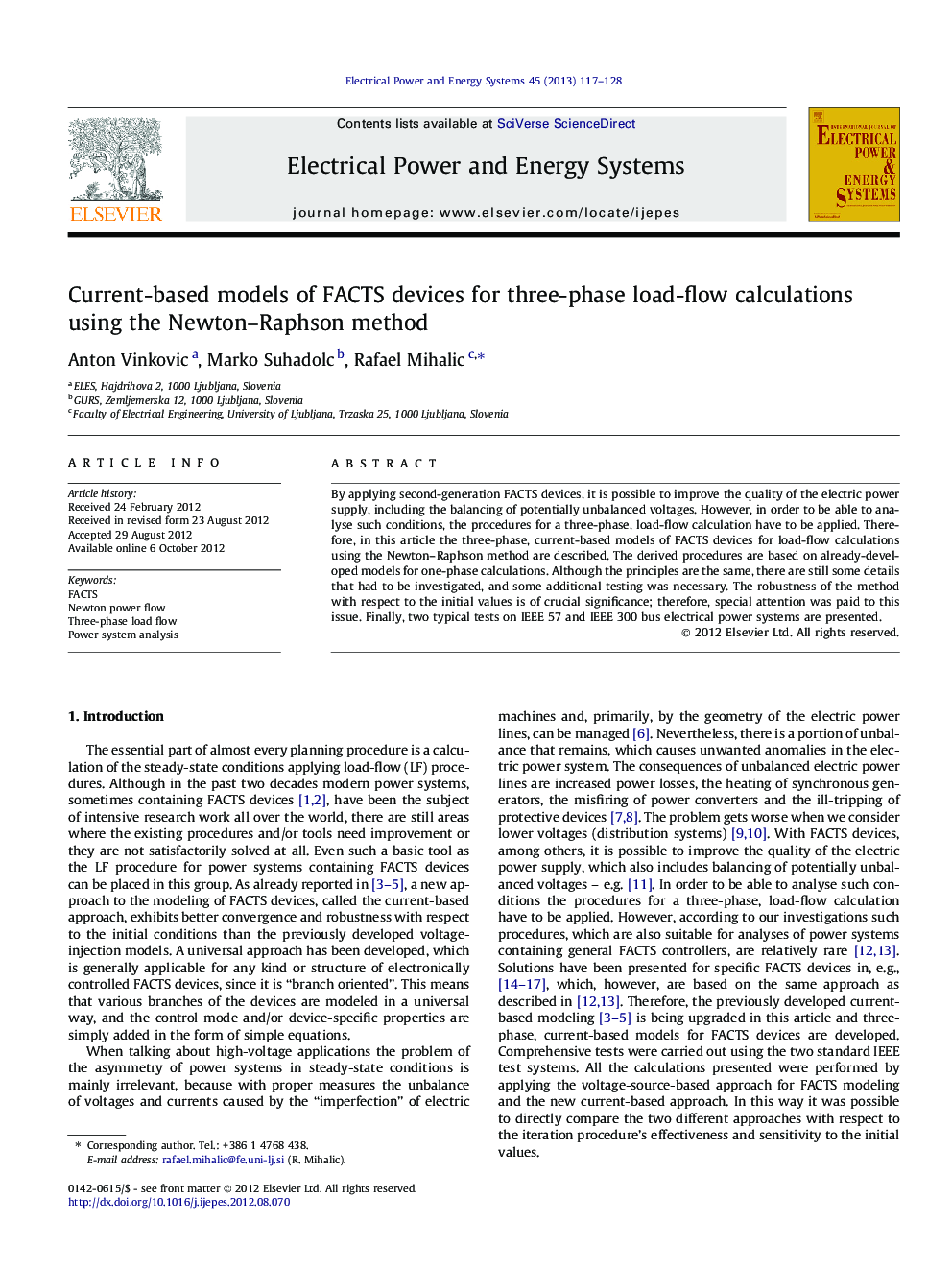| Article ID | Journal | Published Year | Pages | File Type |
|---|---|---|---|---|
| 398935 | International Journal of Electrical Power & Energy Systems | 2013 | 12 Pages |
By applying second-generation FACTS devices, it is possible to improve the quality of the electric power supply, including the balancing of potentially unbalanced voltages. However, in order to be able to analyse such conditions, the procedures for a three-phase, load-flow calculation have to be applied. Therefore, in this article the three-phase, current-based models of FACTS devices for load-flow calculations using the Newton–Raphson method are described. The derived procedures are based on already-developed models for one-phase calculations. Although the principles are the same, there are still some details that had to be investigated, and some additional testing was necessary. The robustness of the method with respect to the initial values is of crucial significance; therefore, special attention was paid to this issue. Finally, two typical tests on IEEE 57 and IEEE 300 bus electrical power systems are presented.
► Second-generation FACTS devices may balance potentially unbalanced conditions. ► For analysis the procedures for a three-phase load-flow calculation are needed. ► In the literature, the suitable general models are rare. ► In some situations it is problematic with regards to issues of convergence and initial conditions. ► The new, universal approach is presented and compared with the existing one.
